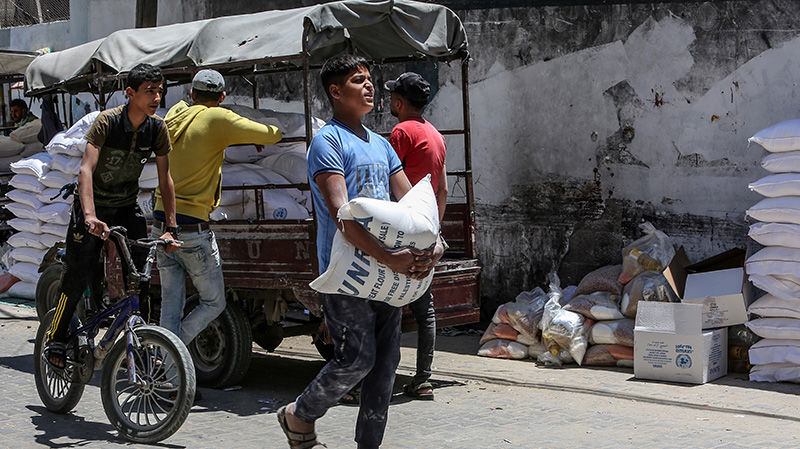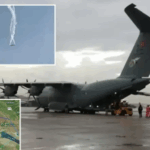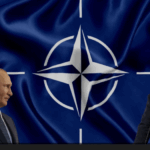The article “A Cycle of Deprivation: The Challenges of Getting Humanitarian Aid into Gaza” by the Arab Center Washington DC explores the major challenges faced in providing humanitarian aid to Gaza. The main points are:
- Blockade and Restrictions: Gaza is under a severe blockade imposed by Israel and Egypt, which restricts the flow of goods, including essential humanitarian supplies. This blockade has a significant impact on every aspect of life in Gaza, causing severe shortages of food, medicine, and other essential items.
- Political and Bureaucratic Obstacles: The process of delivering aid is made complicated by political and bureaucratic obstacles. There are many checkpoints, approval procedures, and coordination issues between different parties involved, including international organizations, the Israeli authorities, and Palestinian factions.
- Humanitarian Needs vs. Aid Capacity: The demand for humanitarian aid greatly exceeds the current capacity to provide it effectively. This situation is worsened by the ongoing conflict and occasional escalations, which further damage the already fragile aid infrastructure.
- Impact on Civilians: The inability to provide sufficient aid has a severe impact on the civilian population in Gaza, leading to a worsening humanitarian crisis. The people of Gaza are facing extreme poverty, malnutrition, and a lack of access to basic services.
- Calls for Reform: The article highlights the need for changes in the system of delivering humanitarian aid. It calls for more effective and less restrictive mechanisms to ensure that help reaches those who need it the most. Additionally, it suggests addressing the underlying political and logistical issues.
The main idea highlights the need to urgently address both immediate humanitarian needs and structural problems that prevent aid from reaching Gaza.
Read more below.
“A Cycle of Deprivation”: The Challenges of Getting Humanitarian Aid into Gaza
On March 7, exactly five months after Israel initiated a military campaign in the Gaza Strip that has been increasingly described as a genocide, President Joe Biden was due to deliver his annual State of the Union address. In response to reports that Israel was blocking entry of aid into Gaza, and in the face of mounting evidence about the humanitarian catastrophe unfolding (including pending famine), the president announced that the United States would “lead an emergency mission to establish a temporary pier in the Mediterranean Sea on the Gaza coast” that would “enable a massive increase in the amount of humanitarian assistance getting into Gaza every day.”
Aside from this tacit admission that nowhere near enough aid was getting into Gaza, Biden seemed to directly place the responsibility for the aid shortfall on the country also bombing the territory, “Israel must allow more aid into Gaza…to the leadership of Israel I say this. Humanitarian assistance cannot be a secondary consideration or a bargaining chip,” the president stated.
Biden’s words proved to be as effective as the pier itself. Construction did not begin until late April, and the first shipments of aid were not delivered until mid-May. The assistance consisted of high-nutrition biscuits, and the World Food Programme was set to receive and distribute it. Several times in the subsequent weeks, the US military had to dismantle and reconstruct the pier due to technical and weather issues. The Biden administration finally shut down the pier entirely in mid-July.
In total, the pier was only operational for approximately 25 days and based on the most optimistic estimates allowed the equivalent of 646 truckloads of food and other goods to enter Gaza. Experts estimate that, to stave off a humanitarian catastrophe, between 300 and 600 trucks need to enter the Strip every single day. In essence, this means that the time and resources, including at least $230 million, that the United States spent on the pier delivered just over one day’s worth of aid. The president of Refugees International called the effort “a boondoggle from start to finish.”
The time and resources the United States spent on the pier delivered just over one day’s worth of aid.
The construction of the pier also distracted from important questions—the most important being, why was so little aid getting into Gaza to begin with? Why did the United States have to go around its purported ally, Israel, to try to get food, medicine, fuel, and other vital goods to the same people that Israel was bombing?
While the bombings, shootings, detentions, and other horrific events in Gaza have consumed much of the media’s attention, most people in Gaza who have survived thus far are facing a less covered threat that is entirely human-made and is causing untold suffering, death, and disability—the lack of aid being allowed to enter the besieged Strip. Unfortunately, blocking aid from entering the territory was the Israeli policy long before October 7.
A Long History of Controlling Aid into Gaza
After decades of primarily emergency humanitarian aid under various administrative authorities, international aid to the Palestinians significantly increased in the mid-1990s. During this period, Israel and the Palestine Liberation Organization signed the Oslo Accords, which, in theory, were supposed to begin the processes needed to establish a sovereign Palestinian state. In nominal support of this effort, the international community began to contribute billions in international aid to Palestinians in the West Bank and Gaza through US Agency for International Development and other aid agencies as well as through United Nations Relief and Works Agency (UNRWA), which was already working in the Gaza Strip and West Bank, to support health, education, and other social needs.
Israel borders the Gaza Strip on three sides and operates multiple border crossings, including the one connecting the Strip with Egypt in the south. Since the first Intifada in the late 1980s, Israel imposed increasingly tight restrictions on Palestinian movement. International NGOs already had to coordinate with Israel to access the occupied territories, and Israel already had a long history of non-cooperation, contributing to significant humanitarian need.
After Hamas won the 2006 Palestinian Legislative Council elections in the Gaza Strip, Israel cemented its control of aid into Gaza in a new way. Almost immediately, in acts of collective punishment, Israel began to impose more restrictive border closures on Gaza, leading to severe food shortages. Dov Weisglass, an advisor to Israel’s then prime minister Ehud Olmert, summed up the policy in a now infamous quote: “The idea is to put the Palestinians on a diet, but not to make them die of hunger.”
In 2007, Israel imposed a full air, land, and sea blockade of the Gaza Strip, devastating the economy and causing shortages of foods, medication, fuel, and basic goods of all types, from lumber to spices. After this period, despite multiple other land crossings, most movement of Palestinian goods and people came through the Beit Hanoun (Erez) crossing through Israel or the Rafah crossing through Egypt. Not surprisingly, the blockade led to a greater humanitarian crisis, one that aid agencies consistently warned was escalating. Yet there was no meaningful regional or international pushback to this explicit act of collective punishment. Instead, within several years, the blockade became part of the permanent backdrop of the Palestinian story, much as the occupation had decades earlier.
A Tightening Siege
On October 9, 2023, Israel’s Defense Minister Yoav Gallant announced “a complete siege … no electricity, no water, no food, no fuel. We are fighting human animals, and we act accordingly.” Almost immediately, humanitarian and human rights groups denounced the decision, arguing that the move was clearly a war crime and violation of human rights. Just over a week later, Israel slightly recanted, announcing it would allow minimal amounts of food, water, and medicine, but only to the southern part of Gaza. Without the fuel needed to maintain vital infrastructure in Gaza after Israel also had cut off water and electricity, such a change still could not meet the needs of the population.
Thus began a cruel but entirely predictable few months. As Israel continued to bomb Gaza, killing and injuring at least 132,049 people, destroying entire city blocks of homes, shops, hospitals, mosques, churches, schools, and roads, forcing hundreds of thousands of Palestinians in Gaza to flee repeatedly from one area to the next, and kidnapping and torturing thousands more, it also maintained complete control over entry of the aid Palestinians needed to live another day amid the carnage. And by all accounts, this aid has been completely inadequate. A UN spokesperson described the aid access restraints imposed by Israel as “perpetuating a continued cycle of deprivation and distress among affected people who are facing death, pain, hunger, thirst, on a daily basis.”
There are several factors shaping these dynamics. The first, of course, is Israel’s control over the border crossings into Gaza. Israel has utilized its preexisting rule of the crossings to create significant aid shortfalls. Prior to early May, most aid and humanitarian workers entered through the Rafah crossing. This was already an inefficient process for many reasons. Rafah was never intended to process hundreds of large trucks per day, and lengthy Israeli inspections of trucks, and arbitrary decisions about what items cannot enter Gaza, including oxygen canisters, insulin, painkillers, and water filters, made the process even slower. Israel rejected entire pallets of aid, regardless of contents, because they did not fit the exact measurements the Israeli government approved—and sometimes for no apparent reason. Many aid missions were denied entirely.
Israel has utilized its preexisting rule of the crossings to create significant aid shortfalls.
For months, images of miles of trucks backed up at the Rafah border led many to question Israel’s assurance that there was “no limit” on the amount of aid entering Gaza. Rafah was also not ideal as a solitary border crossing as it is in the south of Gaza, far from the more needy populations in the north, and aid agencies complained of difficulties in coordinating with Israel to allow convoys to travel there. Israel refused to open other crossings across Gaza, and banned UNRWA aid distributions in the north entirely by the end of March.
In May, Israel invaded Rafah and seized the Rafah crossing, and it has been shut since May 7. Since then, Israel temporarily opened and then closed the Erez crossing in the north, and is now only allowing entry of pre-approved goods through two crossings: As-Siafa (Erez West) in the north, and Karem Abu Salem (Kerem Shalom) in the south. The latter is also the only available crossing for people. But the United Nations has deemed this crossing “not safe” to access from inside Gaza. While this crossing was originally meant to be a temporary bypass of Rafah as the Israeli military conducted its operation there, Rafah has remained closed months later with no indication of when Israel may reopen it.
Data capturing the number of truckloads into Gaza show a peak in April 2024, when the most international attention was on the issue of aid. By early August, the number had slowed to a trickle, with fewer than 500 aid trucks entering Gaza between August 1 and 5. While the United Nations has been unable to count and confirm private sector cargo entry after Rafah closed, it is clear that there is nowhere near the number of trucks needed entering Gaza.
Unfortunately, entry into Gaza is just the first challenge of aid distribution. The second hurdle is the logistical and security difficulties with distributing aid across Gaza once it enters. While not a large territory—just about 141 square miles—much of Gaza has been destroyed during Israel’s current war. For example, Israel has destroyed or damaged an estimated 92 percent of primary roads across Gaza. This severely limits the ability of aid trucks to travel throughout the territory, especially to the north, where the need is greatest.
Similarly, Israel has destroyed many warehouses suitable for storing food and medications or made them unreachable. Most of the remaining facilities have no temperature regulation or pest control, limiting their use. This had made it imperative to use refrigerated trucks as makeshift storage units, but this is an expensive and inefficient solution. Gazans are also unclear on where and how they can get aid, and many fear leaving their homes to retrieve aid following repeated Israeli attacks on civilians waiting for food, such as the flour massacre in March 2024 that killed more than 100 people.
The other aspect of the distribution hurdle is security, both for humanitarian staff and the convoys themselves. Hundreds of aid workers have been killed by Israeli bombing, including most notoriously seven employees of World Central Kitchen in April, whom Israeli rockets targeted multiple times despite prior coordination with Israel. The organization halted its work for weeks, as did multiple other humanitarian agencies when faced with attacks and threats. This gap left much needed aid awaiting collection. The loss of personnel as well as the consistent disruptions in operations have significantly limited aid distribution efforts.
Land crossings have not fared much better. The main crossing left open today, best known as Kerem Shalom, is highly insecure due both to Israeli military operations in the surrounding areas and the constant raiding of aid convoys by desperate civilians. Due to the fact that Israel has also killed many police units in Gaza responsible for orderly aid distribution, lawlessness around aid delivery has increased. As a UN spokesperson explained, “When aid gets to a place, people are starving, and they’re worried that this may be the last food that they see…They have to be assured that there’s going to be a regular flow of goods so that there’s not a panic when we get to the area.”
A Purposeful System of Deprivation
Despite decades of reports and statistics describing in great detail the humanitarian toll of Israel’s blockade of Gaza, the international community has hardly done anything to lift Israel’s blockage of aid entering Gaza for decades. To separate Israel’s military violence from the structural violence of restricting the entry of food to people who are starving is to fundamentally misunderstand Israel’s mission in the Gaza Strip— and in the occupied Palestinian territories more broadly. Even Israeli Prime Minister Benjamin Netanyahu has admitted he will continue the military campaign regardless of a hostage deal.
As many Israeli politicians have made clear for decades, they see the land where Palestinians live as a future part of Israel, while the Palestinians living on that land are a nuisance population that must leave, in whatever form such expulsion may take. Keeping Palestinians “on a diet” was apparently no longer an effective strategy, nor were the short-term bombing campaigns that Israel previously conducted against Gaza. While Israel’s allies are content to ignore all signs that point to this conclusion, the extremist settler segment of Israel’s population has gotten the message, blocking aid convoys from entering Gaza as Israeli soldiers watch nearby, and planning for the building of their new homes in Gaza once the Palestinians are gone— with support of government ministers.
Using deprivation of basic supplies and starvation as weapons of war is an unsurprising escalation of what Israel has already been doing for years. However, today, with a genocide case looming at the International Court of Justice and applications for arrest warrants at the International Criminal Court for Israel’s prime minister and defense minister underway— Israel’s actions may, for once, be seen in the appropriate framing. What remains unclear is how many Palestinians will need to die before that happens.
BY: YARA M. ASI
Featured image credit: Shutterstock/Anas Mohammed
Source: Arab Center Washington DC (ACW)







